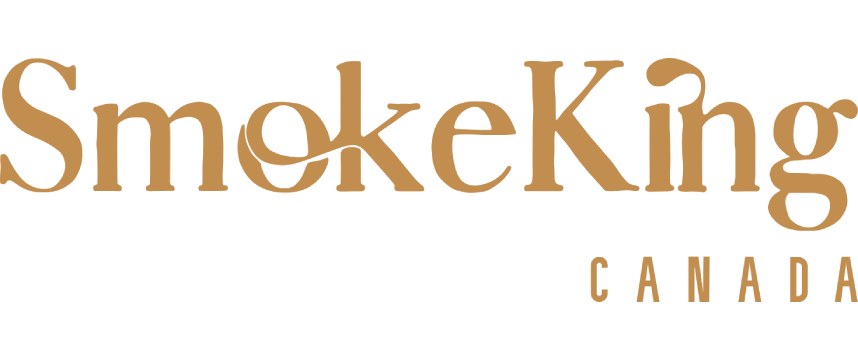Walk into any Canadian convenience store, and you’ll immediately notice cigarette packages covered in graphic health warnings, virtually invisible branding, and shocking prices. Canada has built one of the world’s strictest tobacco control systems, combining high prices, plain packaging laws, and disturbing images to discourage smoking. Understanding why Canada cigarette prices and packaging are so extreme reveals how seriously the government takes public health.
What Makes Canada Cigarette Prices Stand Out Globally?
If you think cigarettes are expensive where you live, Canadian prices will make your jaw drop. We’re talking anywhere from about $15 to $20+ CAD per pack in 2025 (depending on province and pack size), depending on which province you’re in. That’s roughly $11 to $15 USD for a single pack of 20 cigarettes.
Federal and Provincial Tax Structure
The reason behind these astronomical prices is pretty straightforward: taxes, and lots of them. Canada hits smokers with a double whammy of federal and provincial taxes. As of April 1, 2025, the federal excise duty equals about $0.19078 per cigarette (≈ $3.82 per 20-pack), while each province stacks on its own tobacco tax and applicable sales taxes. Some provinces add sales tax on top of that, creating a three-layer tax cake that smokers end up paying for.
“Sin Tax” Pricing Mechanism
Canada treats cigarettes as what economists call a “demerit good”—something the government actively wants people to consume less of. The strategy is simple: make it hurt financially, and people will think twice before lighting up. These so-called “sin taxes” are designed not just to generate revenue but to change behavior. Every time taxes go up, researchers see a drop in cigarette sales, especially among younger smokers who are more price-sensitive.
Price Comparison with Other Countries
To put things in perspective, let’s look at how cigarette price in Canada stacks up internationally:
| Country | Average Pack Price (USD) | Tax as % of Price |
| Canada | High; typically >$10 | Large share; varies by province (majority of price) |
| United States | Varies by state; often < $10 | Lower than Canada overall; varies widely by state |
| United Kingdom | Among the highest globally | Very high share of price |
| Australia | Among the highest globally | Very high share of price |
| Mexico | Lower than Canada/US/UK/AUS | Substantial share but lower than UK |
Canada sits firmly in the high-price category, with prices comparable to other high-tax countries like the UK and Australia. Compare that to the U.S., where you can still find packs under $10 in many states, and you see why some Canadians living near the border make the trip south to stock up.

How Does Cigarette Price in Canada Vary between Provinces?
Not all Canadian smokers pay the same amount, either. The provincial governments can set the taxation of tobacco independently, and indeed, they vary.
Provincial Tax Rate Differences
Quebec used to be one of the lowest-taxed provinces in Canada historically, making it comparatively a “cheaper” place to smoke, although prohibitively expensive by international standards. Conversely, provinces such as Saskatchewan and Newfoundland have increased taxes to a level bringing typical 20-pack prices near $18–$20. Ontario averages around the mid-$15s for a 20-pack while British Columbia is closer to about $19.
Most and Least Affordable Provinces
To date, Newfoundland and Labrador is among the most expensive provinces for smokers, with packs around $20. Quebec is currently the cheapest option, with “cheapest” in quotes, because $15-16 per pack is still akin to burning money. The gap between provinces is typically about $3–$5 per pack.
Cross-Border Retailing Phen
This price gap gives rise to some interesting behavior. Canadians living near the U.S. border often make “cigarette runs” to American states with lower taxes. Similarly, people in higher-tax provinces sometimes drive to neighboring provinces to save a few bucks per pack. Indigenous reserves, which often sell tax-exempt cigarettes, have also become popular shopping destinations, though this creates ongoing legal and political tensions.
These cross-border and reserve shopping patterns reflect smokers’ ongoing search for the lowest-priced cigarettes available.
What Is the Special Packaging Rule in Canada for Cigarettes?
Aside from the sticker shock at the checkout line, what makes Canadian cigarettes truly unique is the packaging. If you’ve never witnessed cigarette packaging in Canada, be prepared.
Plain Packaging Legal Requirements
Since 2019, Canada has had plain packaging laws in place that essentially stripped all brand identity from cigarettes. Packs are the default color of drab brown. The brand name is displayed in small, standardized letters. There are no logos, no specially designed fonts, no colors that might lend one brand more attractiveness than another’s. The regulations define “drab brown” as Pantone 448 and set detailed standardized appearance rules.
Large-Scale Graphic Health Warnings
Now it gets really dramatic. By law in Canada, cigarette packs must have health warnings covering at least 75% of the front and back, with updated messaging requirements. Canada also began phasing in health warnings printed directly on individual cigarettes (king size by July 2024; regular size and some little cigars by April 2025).
Display Restrictions and Brand Name
Even the way cigarettes are sold has changed. All provinces and territories require tobacco products to be kept out of sight at retail (display bans implemented 2004–2010), so retailers are no longer allowed to display tobacco products openly. They must be hidden behind closed cabinets or covered displays. When you ask for a specific brand, the clerk opens the cabinet briefly, grabs your pack, and closes it again. The idea is that if people can’t see cigarettes, they’re less likely to buy them impulsively.

How Do These Packaging Rules Affect Consumers?
Do any of these prohibitions ever truly hold weight, or are they merely cosmetic?
Visual Influence and Psychological Effects
Studies have proven that graphic warnings do register in people’s minds. The smokers say the pictures leave them feeling queasy, and many admit that they’ve reconsidered quitting because of what’s on the pack each time they light it. Children and adolescents, the target audience of choice for tobacco corporations, highly disdain the plain packaging and graphic pictures. That’s precisely the reaction health authorities expected.
Impacts on Adolescent Smoking Prevalence
The statistics support this. Teenage smoking in Canada has declined enormously since the introduction of the measures. Although it’s difficult to pinpoint one reason, all public health specialists confirm that the conjunction of increased costs and gruesome packaging has made smoking much less trendy among adolescents. When the pack is $20 and shows you the image of the guy who’s dying, the “coolness” dissipates relatively fast.
Consuming Behavior Changes among Customers
What’s interesting is that the policies also affected the behavior of established smokers. Some people cut back on the number of cigarettes they consume each day. Others switched to roll-your-own tobacco, which is still expensive but just slightly cheaper. And yes, some bought black market cigarettes or shopped across the border. However, consumption has decreased in the aggregate, which, in the view of public health, is a triumph.
FAQs about Canadian Cigarettes
Q1. What is the latest price for one cigarette pack in Canada?
Until 2025, the prices of cigarettes in the provinces of Canada generally vary between $15 and upwards of $ 2 per pack in Canadian dollars, with wide variations depending on the area. Quebec is usually the lowest, at approximately $15-16 per pack, whereas provinces such as Newfoundland and Labrador may find prices upwards of $20-22 per pack. The prices account for the effects of federal excise taxes, provincial levies on tobacco, and, in some instances, sales taxes. The precise cost also depends on the brand and the merchant. The urban outlets may be slightly higher than those of the large outlets, such as chains. Incidentally, if you intend to go to Canada and smoke, do budget accordingly—a carton (10 packs) may easily reach $150-200 or more depending on the location.
Q2. Why should the cost of a cigarette in Canada be so much higher than in the United States?
The significant disparity in prices between American and Canadian cigarettes stems from government priorities and policies. Canada has adopted high tobacco taxation as part of its fundamental public health approach, with taxes accounting for approximately 70-75% of the ultimate retail price. The federal government and provinces both imposed excise taxes that are specifically crafted to deter smoking through economic harm. The United States has significantly weaker federal tobacco levies and an extensive disparity between states, with some states, such as Missouri, having relatively weak cigarette taxes, while others, like New York, tax them at much higher levels. The approach in Canada is more standardized and consistently aggressive nationwide. Canadian governments have also been more adventurous in increasing tobacco taxes regularly, considering them both as an area of revenue and an effective instrument of decreasing the rate of smoking in the nation, especially among the price-conscious young populations and poorer smokers.
Q3. Are all packs in Canada identical in color and design?
Yes, Canada’s plain packaging legislation, which came into effect in 2019, requires that all cigarette packages adhere to standardized design rules. Every pack must be the same drab brown color (officially called Pantone 448), which research suggested was the least appealing color to consumers. Brand names can only appear in a standardized small font with no distinctive styling, logos, or design elements. The only things that stand out are the mandatory graphic health warnings, which must cover at least 75% of the front and back of the package. In addition, Canada is phasing in warnings printed directly on individual cigarettes (2024–2025). This means that, from a visual standpoint, a premium brand and a budget brand appear nearly identical, except for the small text indicating the name. The policy was explicitly designed to eliminate any branding appeal and prevent tobacco companies from using packaging as a marketing tool, particularly to attract young people whose sleek or colorful designs might influence them.
Final Verdict: Public Health Over Profit
Canadian cigarettes are unique in design. The nation chose public health over industry revenue with aggressive taxation, plain packaging, and graphic warnings that do little to make smoking look appealing. Do you smoke in Canada? You’re fighting an infrastructure designed to wean you off the stuff. Ready to quit? There’s free cessation assistance through the Health Canada programs, which have successfully helped thousands stop smoking.



